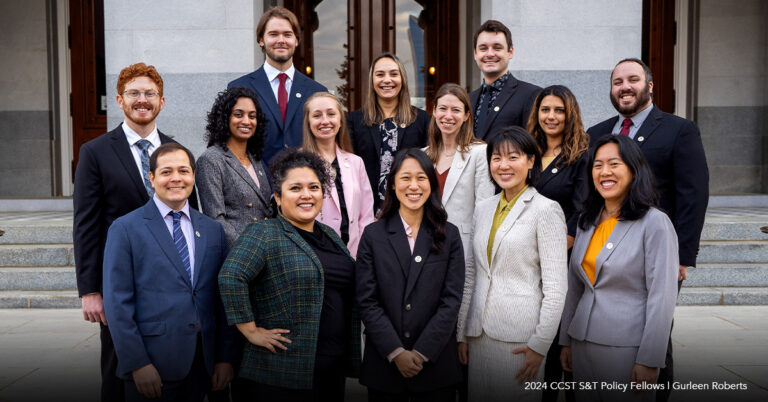Update: Applications for the CCST Science & Technology Policy Fellowship Have Closed
Livermore Valley Open Campus Builds Research Partnerships for the Future
April 27, 2012 | CCST Newsroom, Federal Research in California | Contact: M. Daniel DeCillis

When major federal laboratories such as Lawrence Livermore National Laboratory and Sandia National Laboratories were established, they were designed to be the most advanced science and technology research centers in the world. Currently, while these centers remain among the foremost research institutions in existence, a great deal of cutting-edge research is also flourishing outside the secure walls of these federal facilities.
“Today there is a lot of excellent science and technology research taking place in the laboratories of private industry, universities, and even other countries,” said Andy McIlroy, of Livermore Valley Open Campus Development at Sandia National Laboratories. “In order to preserve the high-tech innovation and research that are essential to our national security, we realized that we needed to create a space for other research organizations to interact with the labs – we can’t just remain internally focused.”
The Livermore Valley Open Campus (LVOC) is an open, unclassified research and development space intended to foster research on current and future national security challenges that require increased coupling to the private sector to understand threats and deploy solutions in areas such as high performance computing, energy and environmental security, cybersecurity, economic security, and non-proliferation.
“The open campus benefits both industry and academia,” said Ron Cochran, executive officer at Lawrence Livermore National Laboratory. “Lawrence Livermore and Sandia are setting aside approximately ten percent of their sites for LVOC. Although we are years away from the ultimate capacity of the campus, the first facilities are already in use and open for business.”
Modeled in part after research and development campuses found at major industrial research parks and other U.S. Department of Energy laboratories with campus-like security, LVOC has a set of business and operating rules devised to enhance and accelerate international scientific collaboration and partnerships with U.S. government agencies, industry and academia.
“A key capability that we’re making available to industry and academia will be a powerful computational facility,” said James “Buck” Koonce, director of economic development at LLNL. “It will be one of the most unique unclassified resources in the world, with a state-of-the-art computational, storage, and visualization capacity and a flexible model of engagement. We’re breaking down the barriers to high performance computing for industry; our facilities have the potential to help transform economic competitiveness in industry from virtual prototyping in manufacturing to the way new drugs are brought to market.”
“It’s about developing connectivity with other research efforts that are aligned with the missions of the laboratories,” added McIlroy.
The initial research areas for LVOC include high performance computing, cybersecurity, biosecurity, combustion and transportation research, high energy density physics, and climate and energy research. These partnerships are often constructed with industry consortia and research programs so as to leverage talent and facilities.
“For example, one initiative currently underway involves the High Performance Computing Innovation Center at Lawrence Livermore to help enable a next-generation electrical grid in California capable of integrating larger amounts of renewable energy production,” said Koonce. “Renewable energy sources such as solar and wind power provide only intermittent power generation, requiring a much more complex grid management in order to compensate for the variable production.” Other collaborations include cybersecurity work with leading software firms such as McAfee and Oracle.
Less than two years old, the LVOC is still in the process of establishing itself. Eventually the LVOC will encompass over 110 acres along the eastern edge of the Livermore Laboratory and Sandia sites. Collaborations are also being planned with the University of California, California State University, and California Community Colleges, as well as other academic institutions.
“LVOC allows us to engage the community in a constructive way,” said McIlroy. “Today’s research environment is one of interconnectivity. Sharing appropriate technologies and building partnerships with the private and public sectors will allow us to stay at the forefront of the science, technology and engineering fields, and also ensure a quality future workforce by expanding opportunities for open engagement of the broader scientific community.”






